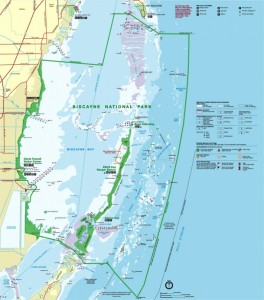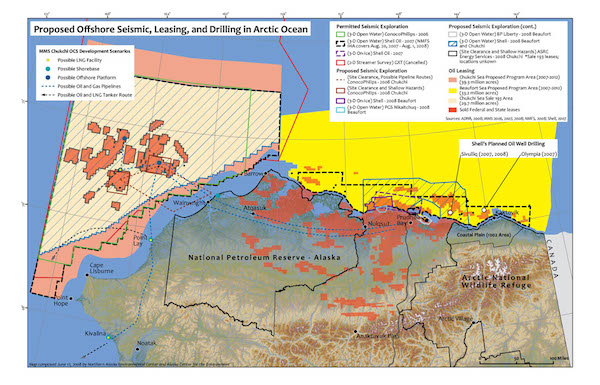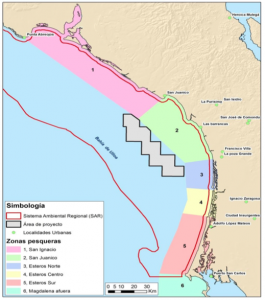Jul 22 2015
It’s not much, but it’s a start. The troubled FAA/NPS collaborative planning process has completed an actual final plan to manage air tours at a national park. But don’t get too excited: it’s not a full-on Air Tour Management Plan, as was the goal for all national parks with sightseeing flights when the two agencies were charged with the task fifteen years ago. Taking advantage of new rules encouraging voluntary agreements with air tour providers, Biscayne National Park in Florida is on the verge of finalizing such agreements with two flight providers.
 The good news is that these agreements limit flights from 8am to 6pm, which leaves sunrise free from flights year-round, while sunsets only occur a bit before 6pm for a couple months in the heart of winter. Similar provisions for flight-free times extending an hour before sunset and an hour after sunrise at the Grand Canyon were derailed at the last minute by Senators McCain and Reid in a rare show of bipartisan meddling. The Grand Canyon remains the only National Park with a formal air tour plan, thanks in part to the fact that the FAA was not part of that process, which predated the start of the FAA/NPS efforts (the FAA and NPS have different approaches to the EIS process, which they’ve been unable to resolve). So it may be an encouraging sign that the first agreements to come out of the joint planning do manage to keep the magic hours on each end of the day free for quieter recreation.
The good news is that these agreements limit flights from 8am to 6pm, which leaves sunrise free from flights year-round, while sunsets only occur a bit before 6pm for a couple months in the heart of winter. Similar provisions for flight-free times extending an hour before sunset and an hour after sunrise at the Grand Canyon were derailed at the last minute by Senators McCain and Reid in a rare show of bipartisan meddling. The Grand Canyon remains the only National Park with a formal air tour plan, thanks in part to the fact that the FAA was not part of that process, which predated the start of the FAA/NPS efforts (the FAA and NPS have different approaches to the EIS process, which they’ve been unable to resolve). So it may be an encouraging sign that the first agreements to come out of the joint planning do manage to keep the magic hours on each end of the day free for quieter recreation.
Of course, Biscayne is not your typical National Park. Within sight of Miami, there is plenty of boat traffic and most of the action takes place near the seashore, with all of its natural and human soundscapes, as well as on and under the waters of Biscayne Bay. Plus, the number of air tours is small (200 annual flights, most from November to May), and there is probably little demand for sunrise and sunset flights. Still, perhaps this first small step will set a precedent for plans at other parks.
Jul 14 2015
Shell Oil is gearing up to do the first new exploratory drilling in the Chukchi Sea off northwestern Alaska. The project has been in the pipeline for years, and has faced numerous legal challenges (mostly regarding the danger of a spill and climate imperatives) and logistical snafus (the most extreme being a drill ship that ran aground). Just last month, a consortium of environmental groups filed a suit challenging the most recent permits; there has yet to be a ruling. The expansion of oil and gas development from Alaska’s north slope to offshore waters will create a marked increase in human noise in an ocean region that is currently relatively free of our intrusions. Exploration leases have been sold in both the Chukchi Sea (left below) and Beaufort Sea (right below).

Earlier this year, the Obama administration officially put some areas in these waters off limits, but a close inspection of the maps presented then reveal that virtually none of these areas were planned for development when the above map was created in 2008; the exclusion zones appear to match the near-shore areas excluded above (one exception: a small portion of the Chukchi zone is now off-limits).
Noise concerns extend far beyond the drilling itself, or even the seismic surveys that take place prior to drilling and during the life of the project. The drill rigs come along with a support fleet of 30 other boats and several aircraft, promising a steady din in the area. “In the Arctic, I can’t emphasize how novel an activity this is,” says NRDC attorney Giulia Good Stefani. “It really is a whole new level of disturbance for an area already experiencing rapid change and stress.” Concerns extend from whales to walruses, seals, and polar bears.
A wide array of ongoing research is underway, aiming to characterize the current soundscape in arctic waters. Read the rest of this entry »
Jul 09 2015
As regular readers may know, I really dislike the expansion of mining into the sea. Not content to be filling the seas with the sounds of our ships and seismic survey airguns traversing the surface, we seem intent on extending our industrial footprint and sound-making onto the seafloor. The oil and gas industry is already there, with its “subsea processing” facilities, as covered extensively by our friends at Ocean Conservation Research. And now, here come the miners:
 What’s not to hate about this? And indeed, I was quickly riled up by a proposal to mine phosphate near a Gray whale birthing lagoon in Baja California, Mexico. An article on The Ecologist’s website stressed the mine’s threat to San Ignacio Lagoon, the southernmost of two lagoons where over 2500 whales arrive each winter to give birth and nurse their young. The mining will take place in five areas within a 350 square zone, 12-21 miles from shore, and roughly 35-70 miles from the mouth of San Ignacio (inlet in pink on map below; mining area in grey).
What’s not to hate about this? And indeed, I was quickly riled up by a proposal to mine phosphate near a Gray whale birthing lagoon in Baja California, Mexico. An article on The Ecologist’s website stressed the mine’s threat to San Ignacio Lagoon, the southernmost of two lagoons where over 2500 whales arrive each winter to give birth and nurse their young. The mining will take place in five areas within a 350 square zone, 12-21 miles from shore, and roughly 35-70 miles from the mouth of San Ignacio (inlet in pink on map below; mining area in grey).
 Spurred by this article, I dug into the project’s environmental assessment to get a sense of how extensive the noise impact of this new mining operation would be. And while there may well be serious issues with returning sediment to the ocean after separation on boats above, direct effects on local animal populations living in the mining zone, and other environmental impacts from the unproven mining techniques to be employed, I have to say that I was surprised at how modest the noise will be. Read the rest of this entry »
Spurred by this article, I dug into the project’s environmental assessment to get a sense of how extensive the noise impact of this new mining operation would be. And while there may well be serious issues with returning sediment to the ocean after separation on boats above, direct effects on local animal populations living in the mining zone, and other environmental impacts from the unproven mining techniques to be employed, I have to say that I was surprised at how modest the noise will be. Read the rest of this entry »
 The good news is that these agreements limit flights from 8am to 6pm, which leaves sunrise free from flights year-round, while sunsets only occur a bit before 6pm for a couple months in the heart of winter. Similar provisions for flight-free times extending an hour before sunset and an hour after sunrise at the Grand Canyon were derailed at the last minute by Senators McCain and Reid in a rare show of bipartisan meddling. The Grand Canyon remains the only National Park with a formal air tour plan, thanks in part to the fact that the FAA was not part of that process, which predated the start of the FAA/NPS efforts (the FAA and NPS have different approaches to the EIS process, which they’ve been unable to resolve). So it may be an encouraging sign that the first agreements to come out of the joint planning do manage to keep the magic hours on each end of the day free for quieter recreation.
The good news is that these agreements limit flights from 8am to 6pm, which leaves sunrise free from flights year-round, while sunsets only occur a bit before 6pm for a couple months in the heart of winter. Similar provisions for flight-free times extending an hour before sunset and an hour after sunrise at the Grand Canyon were derailed at the last minute by Senators McCain and Reid in a rare show of bipartisan meddling. The Grand Canyon remains the only National Park with a formal air tour plan, thanks in part to the fact that the FAA was not part of that process, which predated the start of the FAA/NPS efforts (the FAA and NPS have different approaches to the EIS process, which they’ve been unable to resolve). So it may be an encouraging sign that the first agreements to come out of the joint planning do manage to keep the magic hours on each end of the day free for quieter recreation.


 Spurred by this article, I dug into the project’s
Spurred by this article, I dug into the project’s